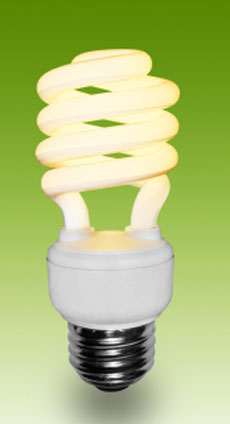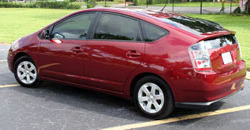
Environment
Power Generation
Most electrical production uses nonrenewable fossil fuels such coal, oil, or natural gas, or nuclear power. The common thread with these sources is that they all heat water to change it to steam. The steam is used to turn the blades of turbines that power generators.
Hydroelectric power plants use renewable sources of energy. Water used in hydroelectric plants is renewable and is replenished through the earth’s water cycle. When dams are used, electric utilities prepare the impounded water behind the dam so that it can be used for recreational purposes.
 Other alternative methods of electrical generation, such as wind energy, solar, geothermal and biomass are also being explored. Electric utilities are very conscious of the conservation and preservation methods they must practice as global citizens.
Other alternative methods of electrical generation, such as wind energy, solar, geothermal and biomass are also being explored. Electric utilities are very conscious of the conservation and preservation methods they must practice as global citizens.
Electric utilities consider the consequences when working with the Earth’s natural resources. They strive to work responsibly for a sustainable energy future.
Wise Use
How can consumers help use electricity wisely? It’s important to…
 1. Buy appliances that are energy efficient. Appliances in stores have energy ratings attached. Check out and compare the energy ratings of similar machines or appliances. Buy responsibly by purchasing models that require less energy to work.
1. Buy appliances that are energy efficient. Appliances in stores have energy ratings attached. Check out and compare the energy ratings of similar machines or appliances. Buy responsibly by purchasing models that require less energy to work.
2. Use only the energy needed to get the job done. Watch for wasteful actions in activities or home use. Do you really need the radio, TV and all the lights on?
3. Replace traditional incandescent light bulbs with compact fluorescent bulbs. Lighting makes up about 20% of your family’s power bill. Using compact fluorescent bulbs will save both money and the environment since they can use up to 75% less energy than incandescent bulbs.
4. This is an easy one: Dress cool in the summer and warm in the winter. This will prevent you from needing to turn up the air conditioner or heater and will save energy and money.
ZEV: Moving Right Along
 What in the world is a ZEV? It’s a “zero emission vehicle!” Emissions are what is left when gasoline is burned in a car’s engine. It exits the car through its tailpipe. These emissions pollute our air. The lower the emissions, the better it is for the environment.
What in the world is a ZEV? It’s a “zero emission vehicle!” Emissions are what is left when gasoline is burned in a car’s engine. It exits the car through its tailpipe. These emissions pollute our air. The lower the emissions, the better it is for the environment.
Most ZEVs are electric cars, but there are also Ultra-Low Emission Vehicles that are plentiful on the road today.
“Hybrid” cars use a combination of gas and batteries to power the car. The gas engine helps to charge the battery when it has “extra” energy (like when coasting down a hill) and the battery helps the gas engine when the car is gaining speed or going up hills. Hybrid cars use less gas, which results in fewer emissions. Newer cars contain emissions systems built to more efficiently capture emissions so that less is discharged into the air.
In general, new cars are being made for better fuel mileage and fewer emissions. This means that cars can go longer on a gallon of gas and fewer pollutants are released into the air.
 With gas prices rising over the past few years, more and more people are buying cars that get better gas mileage, hybrid or not. This means many of the huge trucks and SUVs are being replaced by smaller cars.
With gas prices rising over the past few years, more and more people are buying cars that get better gas mileage, hybrid or not. This means many of the huge trucks and SUVs are being replaced by smaller cars.
The goal is to one day have a renewable fuel source for vehicles that has zero emissions and does not cost much to produce. Scientists are experimenting with biofuels (fuels made from plant materials) and hydrogen and many other materials to find the fuel source of the future.

 Electric utilities generate electricity using different methods, but they are mindful of the sustainability of resources. Sustainability means using natural resources in a responsible way so that they last as long as possible.
Electric utilities generate electricity using different methods, but they are mindful of the sustainability of resources. Sustainability means using natural resources in a responsible way so that they last as long as possible.